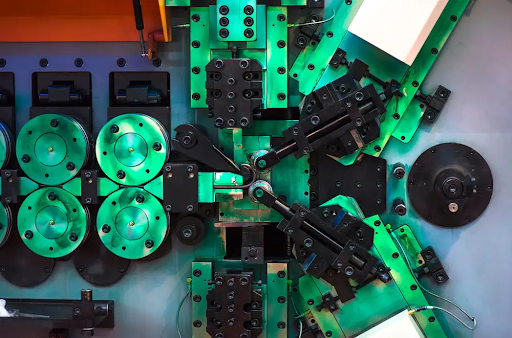Introduction
The shift from traditional rubber manufacturing methods, such as injection molding and casting, to 3D printing has transformed the way rubber-like parts are designed, prototyped, and produced. While conventional methods remain dominant in large-scale manufacturing, additive manufacturing introduces a new level of agility, cost-efficiency, and design freedom.
This white paper examines the advantages of 3D printed rubber over traditional manufacturing techniques, focusing on tooling costs, lead times, geometric complexity, production scalability, material customization, and sustainability.
4.1 No Tooling Costs and Shorter Lead Times
Traditional Manufacturing Constraints
Injection molding and casting require custom metal molds, which add significant costs and production delays. These constraints include:
- High Initial Costs: Custom mold fabrication can range from thousands to tens of thousands of dollars, depending on complexity.
- Extended Lead Times: Mold production and setup can take weeks or even months before manufacturing begins.
- Costly Design Changes: Any modifications require retooling, further increasing costs and delays.
How 3D Printing Eliminates These Issues
- No Mold Required: 3D printed rubber parts are produced directly from digital files, eliminating expensive tooling.
- Faster Turnaround: Instead of waiting weeks for molds, 3D printed elastomers can be produced in days.
- Seamless Design Iterations: Digital manufacturing enables quick modifications and reprints without additional expenses.
Real-World Impact
Industries that require rapid prototyping or on-demand production—such as medical devices, automotive prototyping, and industrial spare parts—benefit from the speed and flexibility of 3D printed rubber. This advantage enables faster innovation cycles and reduced time to market.
4.2 Complex Geometries and Enhanced Design Freedom
Limitations of Traditional Rubber Manufacturing
Injection molding imposes constraints on part design due to mold fabrication limitations, such as:
- Hollow Structures and Internal Channels: Difficult to achieve without complex, multi-part molds.
- Variable Wall Thicknesses: Requires uniform thickness for consistent material flow.
- Multi-Part Assemblies: Often necessary due to molding restrictions, increasing production complexity and costs.
How 3D Printing Unlocks New Design Possibilities
- Lattice Structures: Lightweight yet strong designs that improve flexibility and durability.
- Integrated Features: Eliminates the need for separate assembly, reducing part count and improving performance.
- Custom Surface Textures: Enables grip patterns, ergonomic enhancements, and aesthetic improvements without additional processing.
Case Study: Footwear Industry
Sportswear brands use 3D printing to create midsoles with intricate lattice structures that optimize weight distribution and cushioning—an innovation unattainable with traditional rubber molding techniques.
4.3 Cost-Effectiveness for Small and Medium Production Runs
When Does 3D Printing Make Sense?
While injection molding is ideal for mass production, it becomes cost-prohibitive for smaller production volumes due to mold expenses.
| Production Volume | Best Manufacturing Method | Reason |
| 1-100 parts | 3D Printing | No mold cost, fast production, easy design changes |
| 100-1,000 parts | Hybrid Approach (FIM + 3D Printing) | 3D printed molds allow injection molding for better material selection |
| 1,000+ parts | Injection Molding | Lower per-part cost once mold is amortized |
Cost Savings in Prototyping and Custom Manufacturing
3D printing reduces costs in:
- One-off and customized parts (e.g., patient-specific medical devices, industrial spare parts).
- Short-run production (e.g., pilot product runs for market testing).
- Functional prototyping (e.g., iterative design testing before committing to mass production).
Startups, research labs, and niche manufacturers benefit from 3D printing by accessing high-quality rubber parts without the financial burden of mold fabrication.
4.4 Material Performance and Customization
Material Constraints in Traditional Rubber Manufacturing
Conventional rubber processing methods offer a wide range of elastomers but require pre-defined formulations that are difficult to modify. This results in:
- Limited Material Variability: Once a mold is created, the rubber formulation is fixed.
- Restricted Part Customization: Injection molding requires extensive upfront work to produce variations.
Advantages of 3D Printed Elastomers
- Wide Hardness Range: From soft, flexible rubbers (Shore 30A) to stiffer elastomers (Shore 90A).
- High Tear, Abrasion, and Chemical Resistance: Comparable to traditional molded rubber.
- Custom Performance Characteristics: Engineers can fine-tune material properties, infill densities, and wall thicknesses.
Application Examples
- Automotive Seals: 3D printed TPU withstands extreme temperatures and chemicals.
- Medical Wearables: SLA-based elastomers provide soft, biocompatible properties for prosthetics and orthopedic applications.
- Industrial Hoses and Gaskets: Custom formulations enhance flexibility, durability, or fluid resistance.
By leveraging 3D printing, manufacturers can achieve material performance comparable to traditionally molded rubber while benefiting from greater design flexibility.
4.5 Sustainability and Waste Reduction
Environmental Challenges in Traditional Rubber Manufacturing
- Excess Material Waste: Injection molding produces scrap material in the form of sprues, runners, and defective parts.
- High Energy Consumption: Traditional rubber molding involves high-temperature curing and pressure molding, consuming substantial energy.
- Overproduction Risks: Mass production requires large order quantities, often leading to excess inventory and waste.
How 3D Printing Improves Sustainability
- Material Efficiency: 3D printing deposits material only where needed, minimizing waste.
- On-Demand Production: Reduces the need for excessive stockpiling and overproduction.
- Lower Energy Consumption: Many additive manufacturing processes require less energy than high-pressure injection molding.
With industries shifting toward sustainable manufacturing, 3D printing is emerging as a greener alternative for rubber part production.
Conclusion
The advantages of 3D printed rubber over traditional manufacturing methods are clear:
✅ No tooling costs and faster lead times, enabling rapid prototyping and low-volume production.
✅ Complex geometries and design freedom, allowing for intricate features and lightweight structures.
✅ Cost-effectiveness for small and medium production runs, eliminating the high upfront investment of injection molding.
✅ High-performance material options, offering durability, flexibility, and chemical resistance comparable to traditional rubber.
✅ Sustainability benefits, reducing material waste and energy consumption.
While injection molding remains the best choice for high-volume production, 3D printing is revolutionizing the manufacturing of elastomeric components for prototyping, low-volume, and custom applications.
Are you ready to explore the future of flexible manufacturing? RapidMade offers cutting-edge 3D printing solutions for rubber-like materials, providing cost-effective, high-performance elastomers tailored to your exact specifications.
Visit RapidMade to learn more about our advanced additive manufacturing capabilities and start your next project today!




